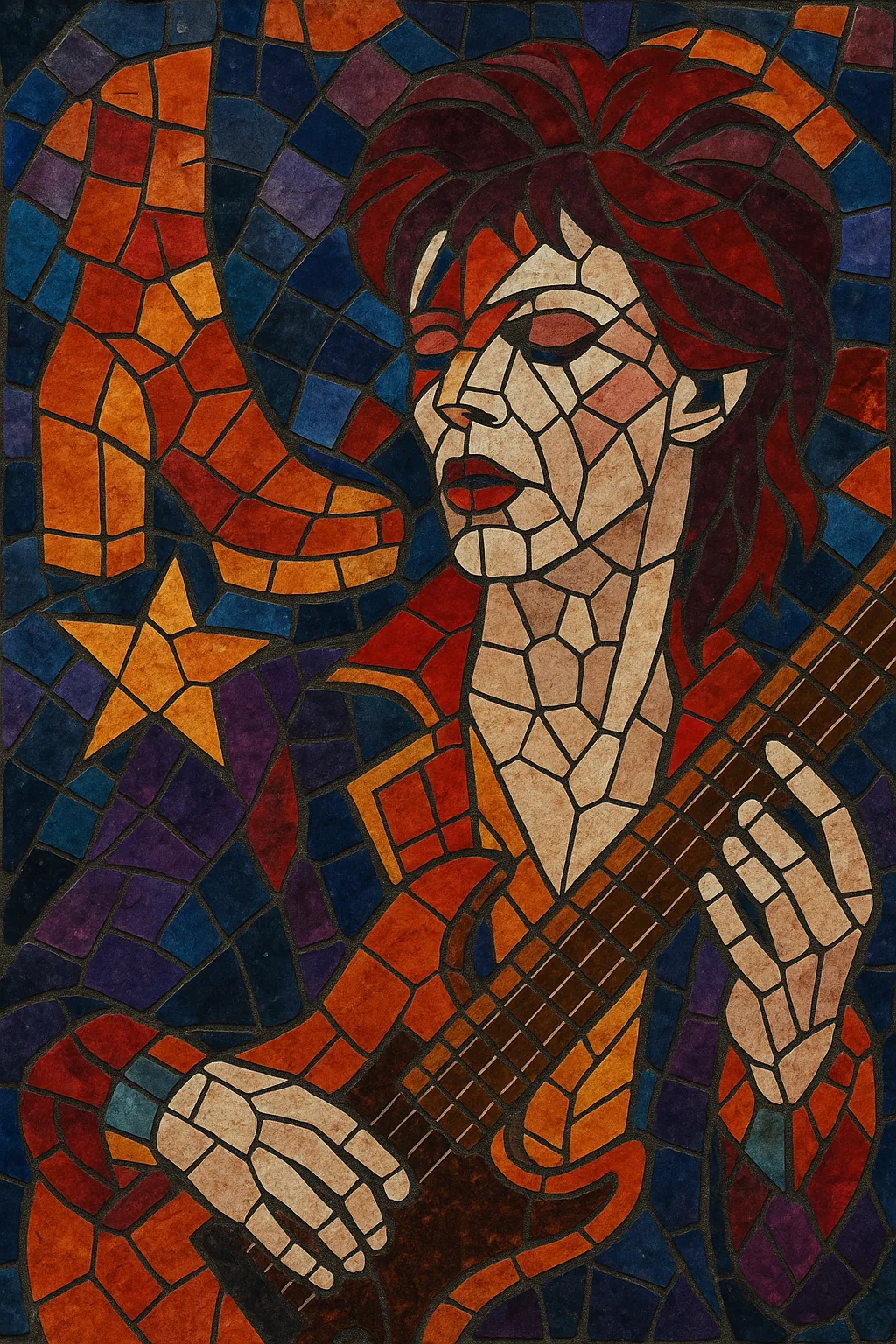Glam rock is a style of rock music that emerged in the early 1970s, defined as much by its flamboyant image and theatricality as by its sound. Artists embraced androgynous fashion, glitter, makeup, platform boots, and bold stage personas, using spectacle to amplify simple, catchy, riff-driven songs.
Musically, glam rock fuses the drive of 1950s rock and roll with hard rock crunch, bubblegum pop hooks, and a sense of artful provocation. Songs often feature stomping, chant-ready rhythms, big choruses, guitar riffs, handclaps, and shout-along refrains. Lyrically, it leans into themes of fantasy, fame, gender play, street romance, and campy drama, blurring the line between pop accessibility and avant-garde performance.
Glam rock crystallized in the United Kingdom around 1971–1972 as artists reacted against the earnestness of late-60s rock and the perceived excesses of prog. Drawing on 1950s rock and roll swagger, bubblegum pop immediacy, and art-school experimentalism, performers like Marc Bolan (T. Rex) and David Bowie helped codify the look (glitter, satin, androgyny) and the sound (riffy guitar rock with huge hooks).
British glam quickly became a mainstream phenomenon, with bands such as Slade, Sweet, and Mott the Hoople scoring multiple hit singles characterized by stomping beats, chanted choruses, and exuberant guitar riffs. At the more artful edge, Roxy Music and Bowie expanded glam’s palette with sophisticated arrangements, electronic textures, and conceptual personas. The movement also birthed a distinct "teenybop" strain aimed at pop charts, while maintaining a subversive edge via gender-bending performance and theatrical shock.
In the United States, the New York Dolls mutated glam’s style into a rawer, garage-inflected sound that foreshadowed punk. Parallel shock-theater acts (e.g., Alice Cooper) overlapped aesthetically, emphasizing performance as provocation. Although U.S. chart impact was more limited than in Britain, glam’s attitude and visuals resonated strongly with emerging downtown scenes.
By the mid-70s, glam’s chart presence waned as disco, punk, and AOR rose. Yet its DNA dispersed into multiple directions: punk adopted glam’s brevity, bravado, and street energy; new wave and synth-pop inherited its stylish artifice and pop craft; and the 1980s saw glam’s showmanship reemerge as glam metal/hair metal.
Glam rock’s fusion of accessible pop-rock with high-concept image reshaped popular music’s relationship to performance, identity, and fashion. Its emphasis on persona, visual storytelling, and big, sing-along hooks informed new romantic, alternative rock, power pop, Britpop, visual kei, and ongoing waves of retro-leaning rock revivalists.
Start with concise, hook-forward songwriting: verses that set the scene and pre-choruses that build tension into an anthemic, chantable chorus. Aim for memorable riffs and shout-along refrains that work both on record and in a live, theatrical context.
Use classic rock and roll progressions (I–IV–V), bluesy turns, and power-chord movement. Glam also favors bold, modal bVI or bVII shifts (e.g., I–bVII–IV), and glam-metal-adjacent chromatic walk-ups. Keep harmonies straightforward to foreground the hook.
Prioritize stomping, mid-tempo beats (around 100–140 BPM). Layer handclaps on backbeats, use tom-heavy fills, and encourage a "football-chant" feel. Straight eighths with occasional swung or shuffled accents can add swagger.
Write about fame, fantasy, street romance, and self-invention with playful, campy flair. Craft a strong visual persona—costume, makeup, and stagecraft are integral. Lean into call-and-response, audience chants, and theatrical asides.


